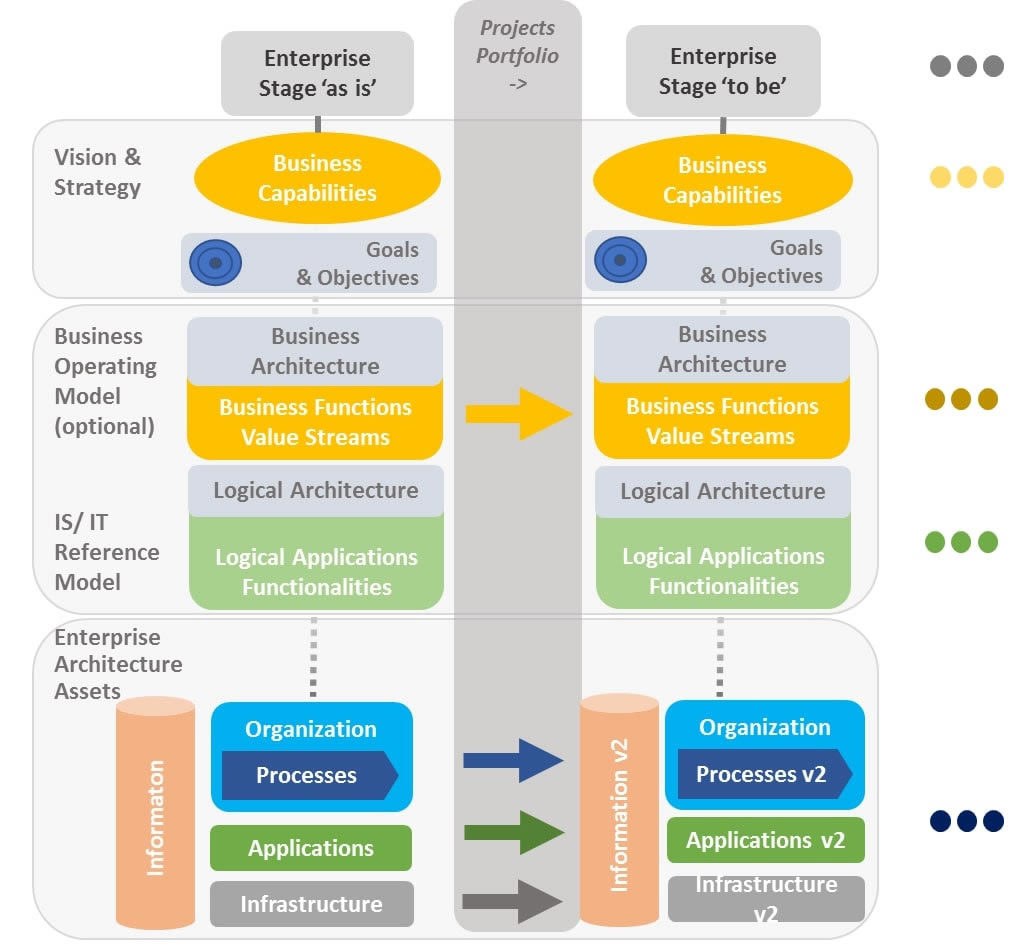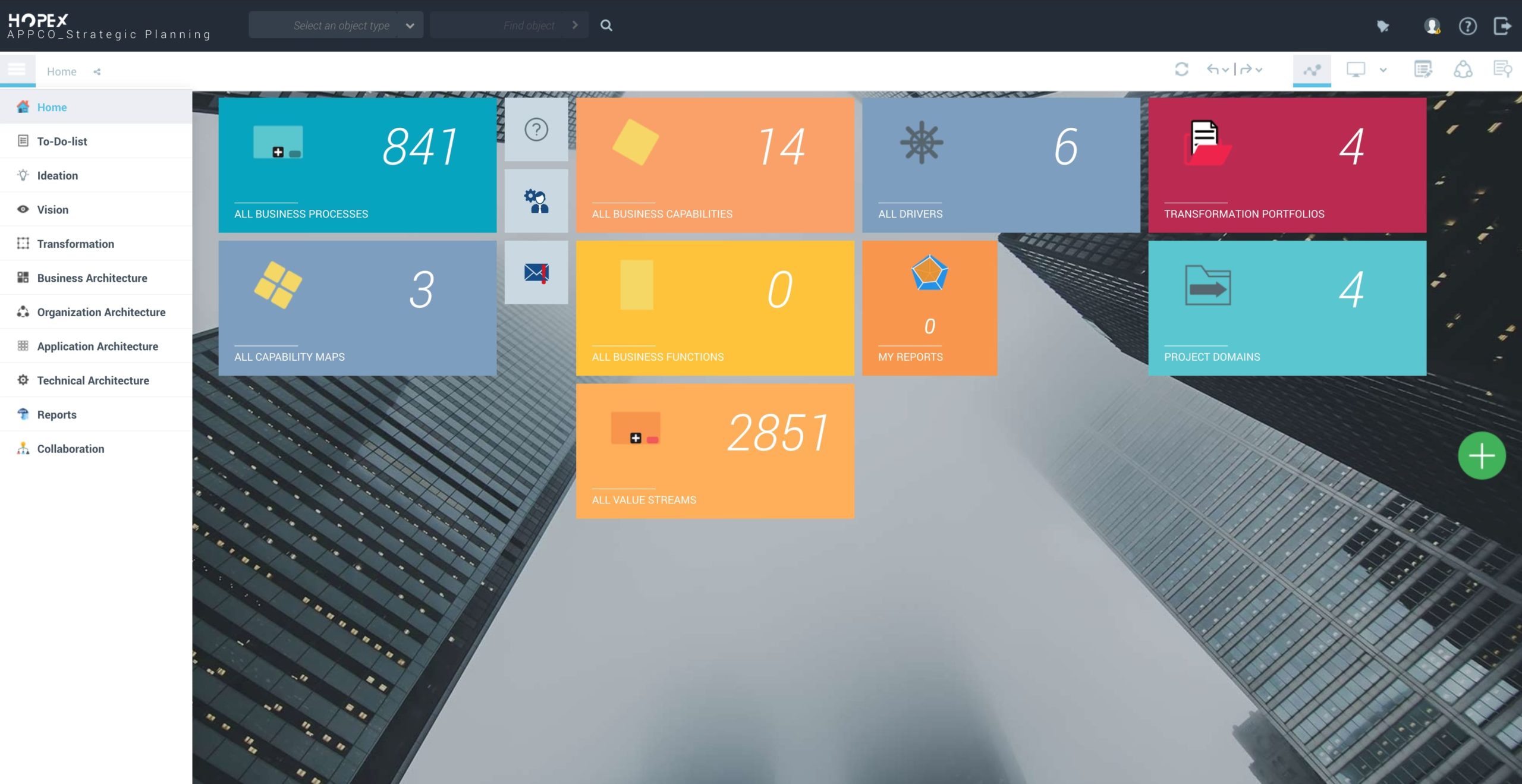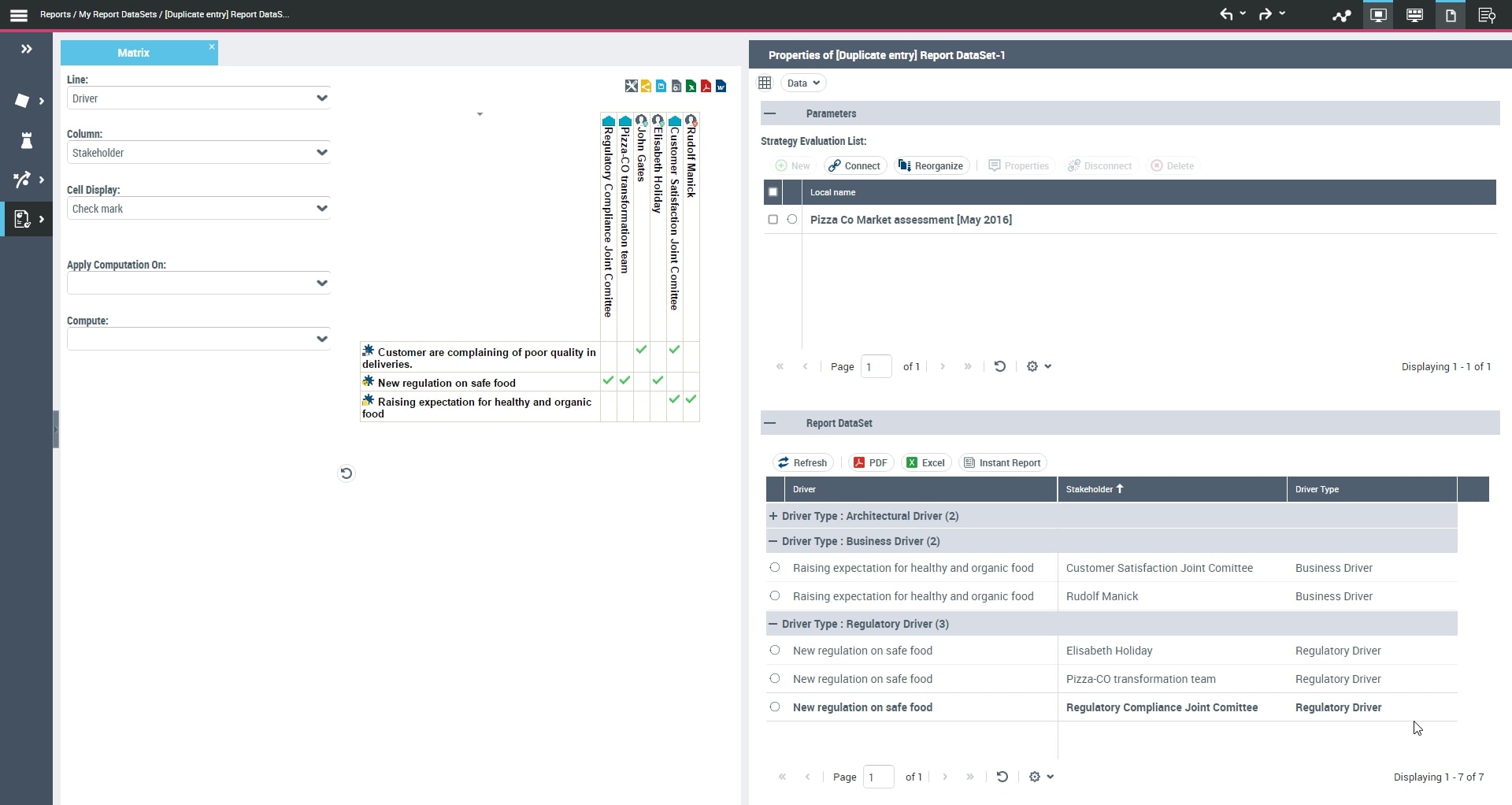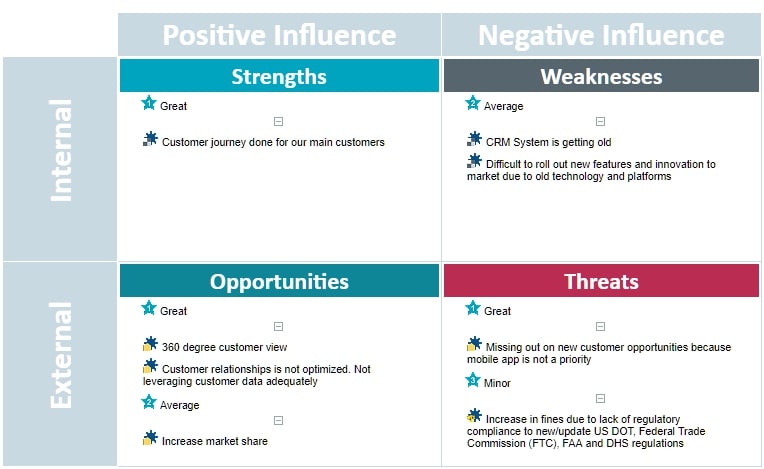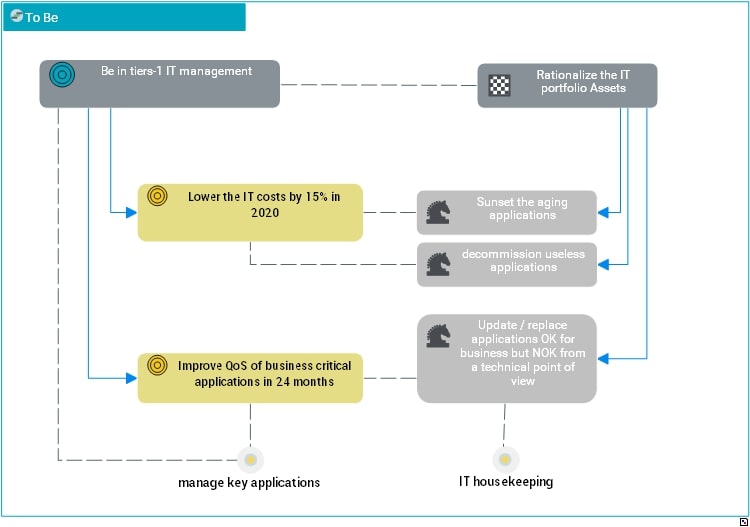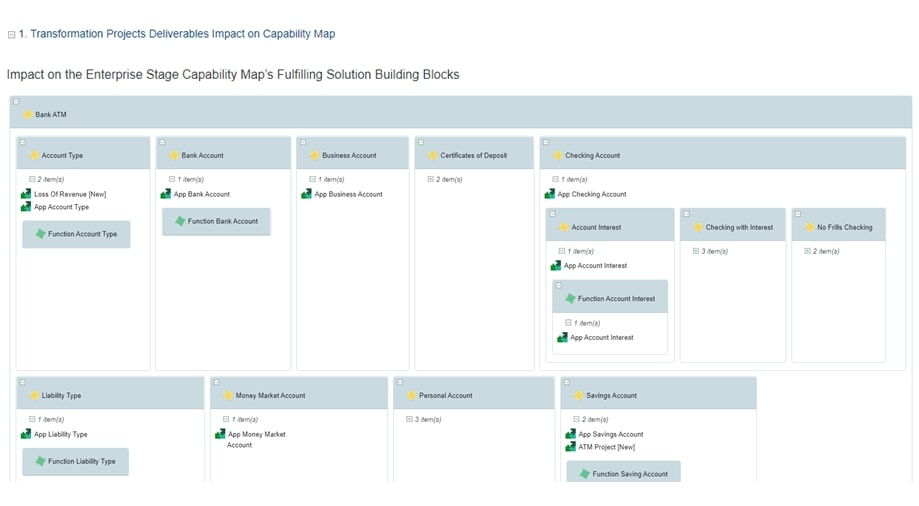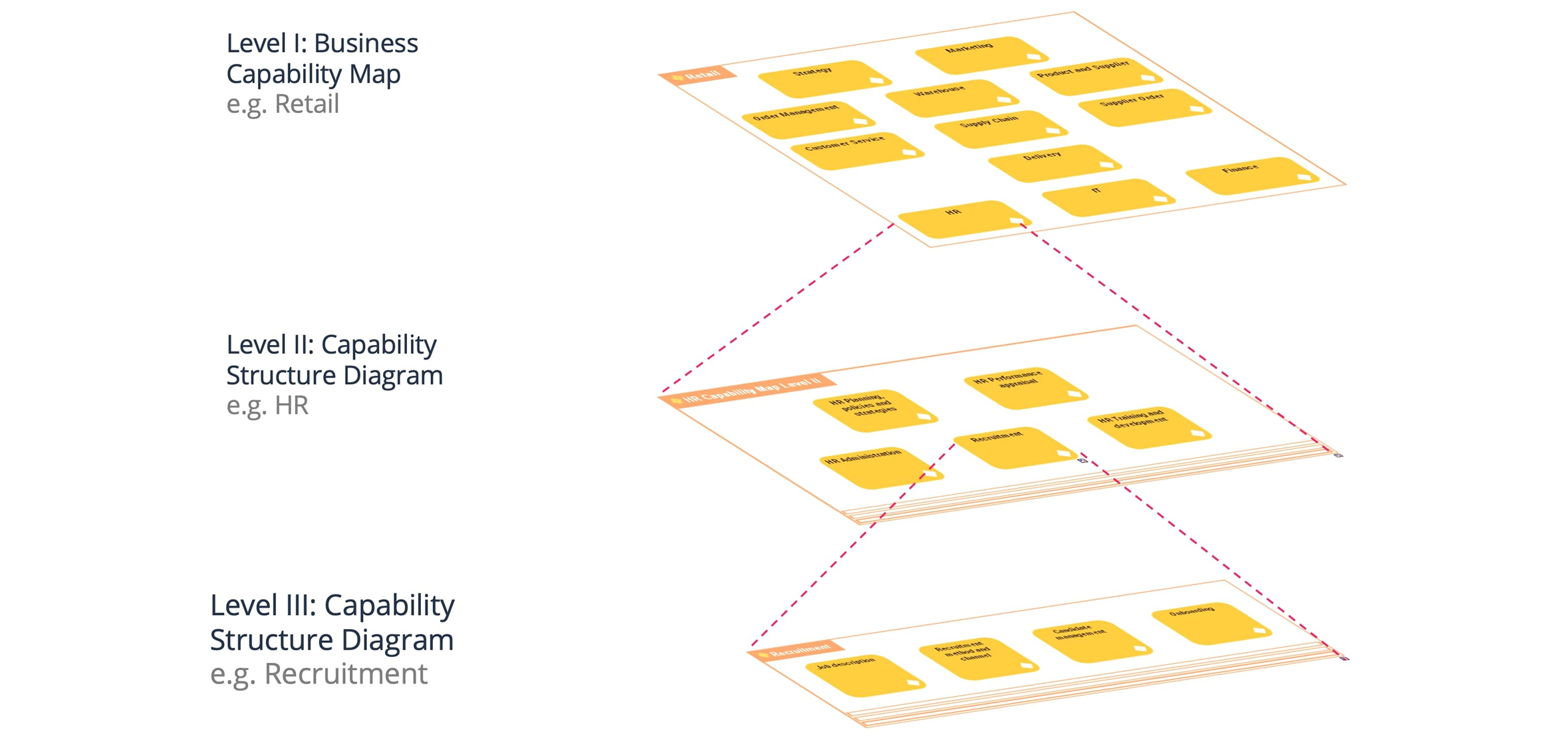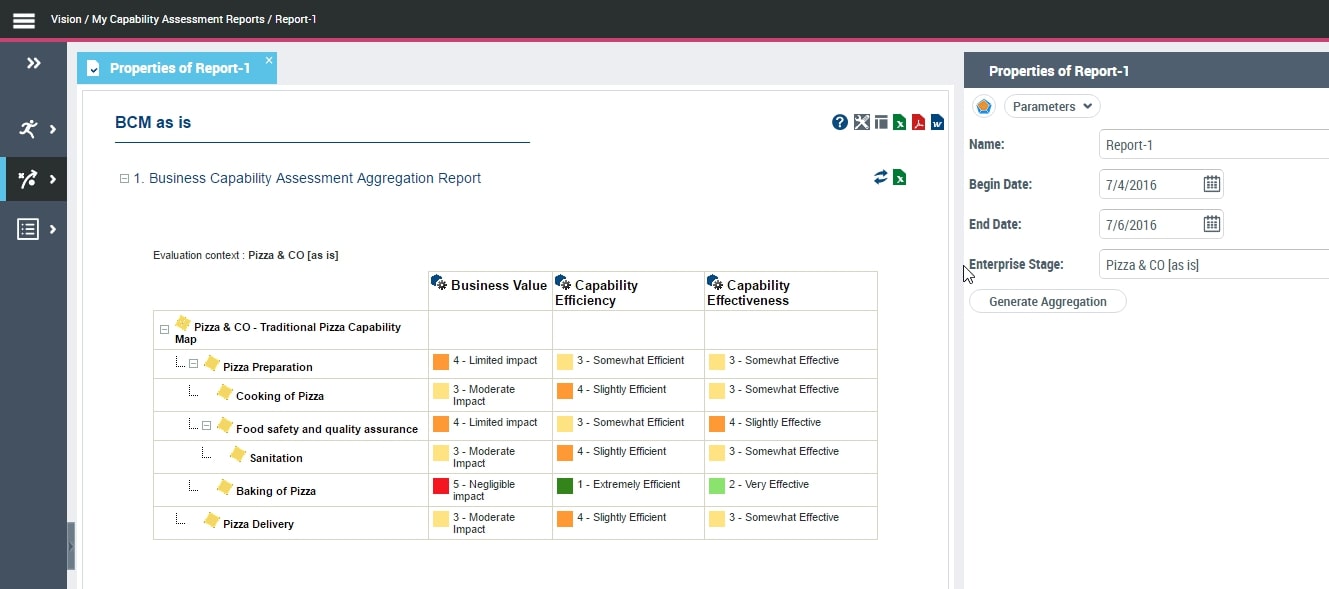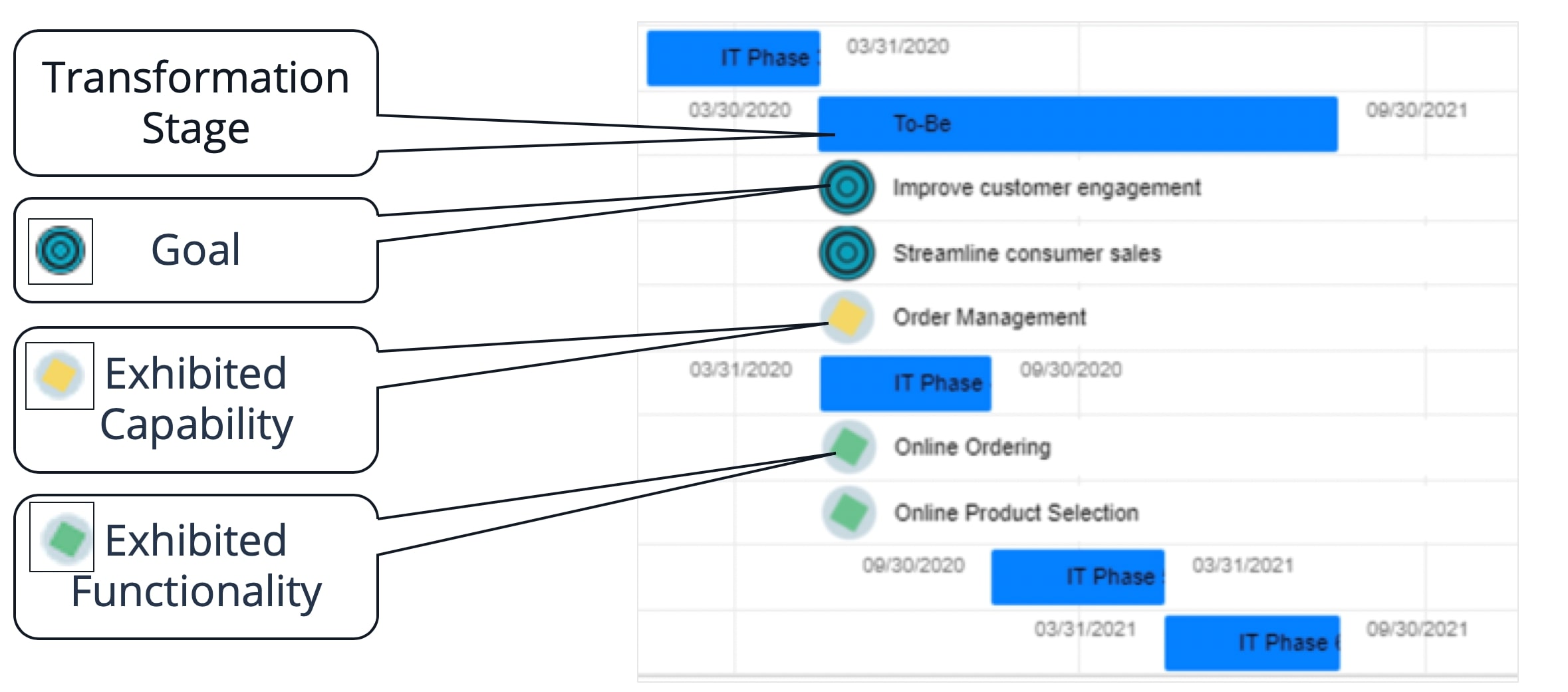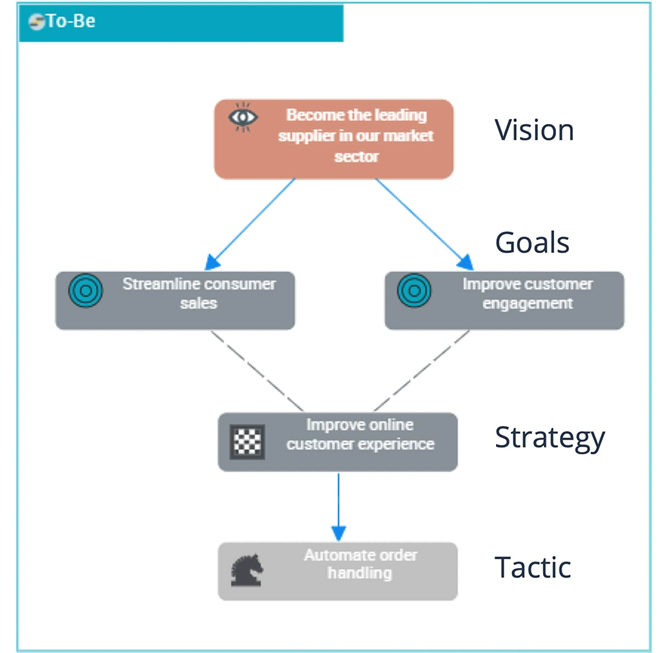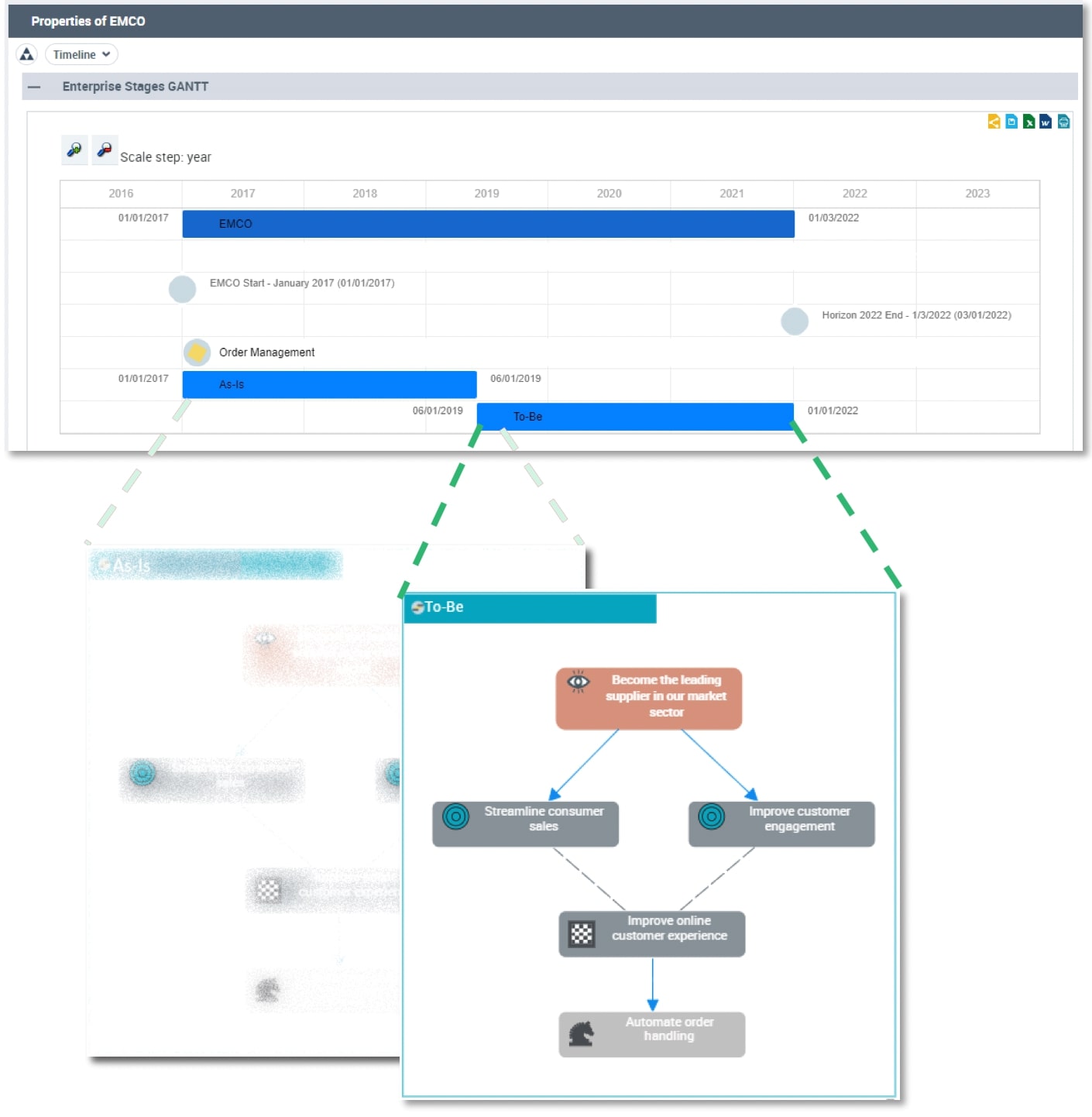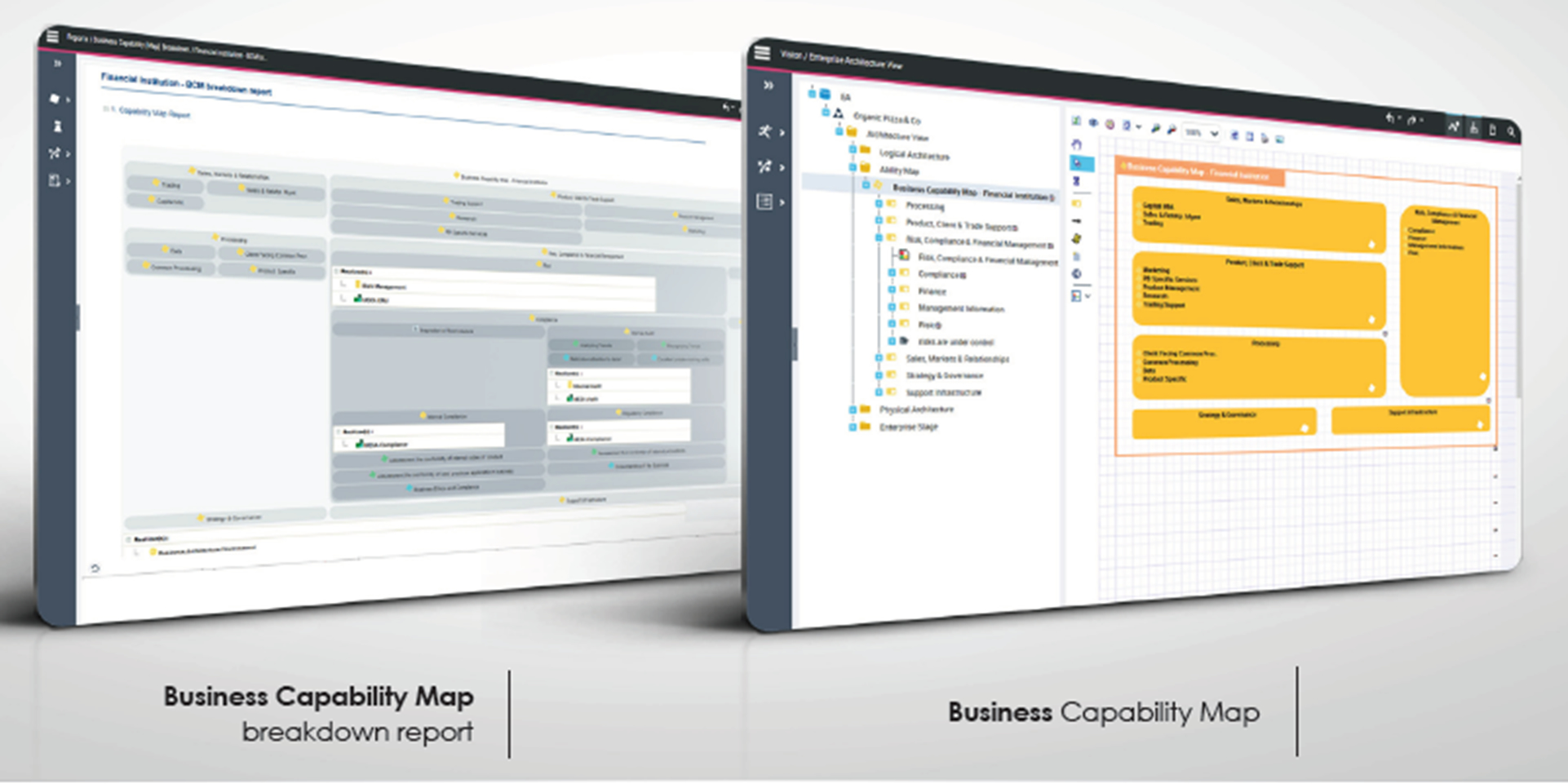HOPEX Business Architecture
HOPEX Business Architecture
One of the modules of the HOPEX BPA product family, HOPEX Business Architecture is the most effective way to design and manage your business transformation roadmaps by basing them on clear strategic goals.
HOPEX Business Architecture consists of three phases: strategy definition, business matching and transformation roadmap creation. The first phase allows users to define the organization’s strategy and match the competencies to the defined strategy.
In the second phase of our product, it allows you to create competence maps. Then, it supports your ability to make competency evaluations in consideration of the competency maps created.
Business Requirements, Project & Process Matching
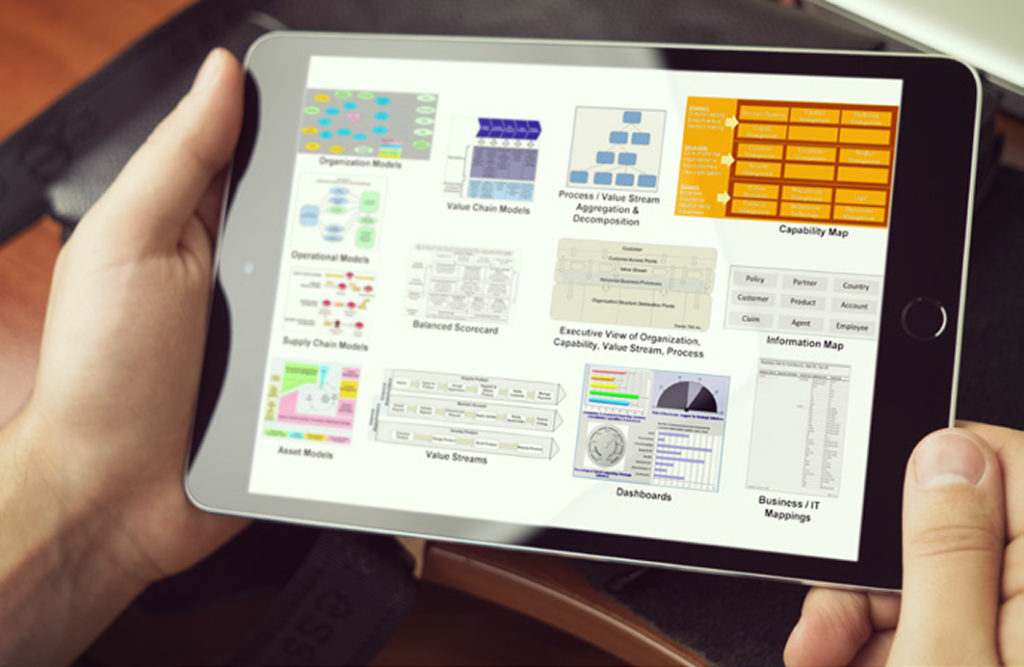
In the last phase, Business Architecture confirms whether your organization is moving on the right way by defining your enterprise road map and matching your enterprise strategy with your corporate competencies.
Synchronized Business / IT Transformation Model
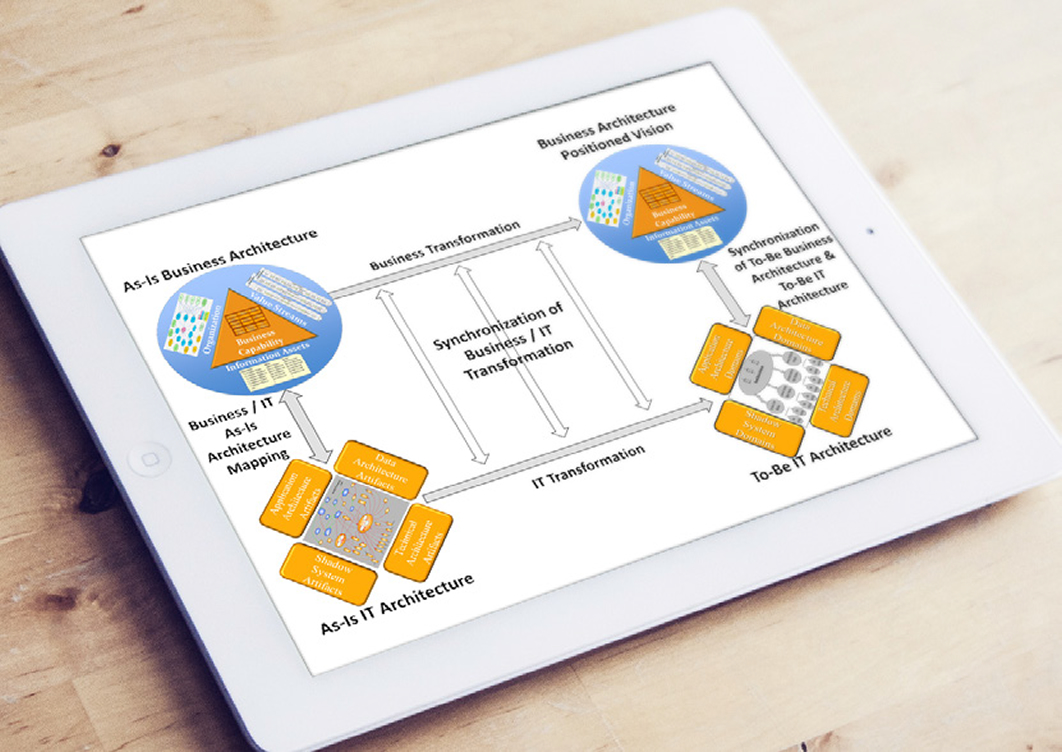
HOPEX Business Architecture works integrated with Hopex. In other words, it enables you to improve your business goals and IT transformation by clearly displaying key information about your organization.
Overview
- Capture the business strategy and transform the business landscape using business capability planning.
- Plan Enterprise Architecture assets according to business objectives and planned capabilities
Key Challenges
HOPEX Business Architecture Benefits
Get visibility into your business strategy
- Capture your company’s objectives and strategy. Connect to your business capabilities to illustrate how your company is planning to achieve its business transformation strategy
Create a business transformation roadmap
- Create a business roadmap that integrates objectives, strategy and business capabilities to ensure investment decisions are aligned to business objectives
Align IT investments to strategy
- Ensure future IT investments match business objectives by tying IT assets to business capabilities
HOPEX Business Architecture Home Page
Business Architecture tile-based homepage
Key Features
Capture the strategy
- Identify transformation drivers
- Perform SWOT analysis of the identified drivers
- Identify the resulting transformation objectives
- Capture organization vision, objectives, strategy and tactics
Model the business
- Map business capabilities
- Assess capabilities from a strategic standpoint
- Design value streams
- Define KPIs and identify areas of improvement
Design the business roadmap
- Define transformation stages. Include objectives, strategic items and capabilities in the roadmap
- Tie related IT architecture for each stage of the roadmap
- Share the business roadmap within the organization
Identify transformation drivers
- Identify transformation drivers per stakeholder: regulatory, business or architectural
- Tie them to the relevant enterprise architecture artifacts.
- Perform this assessment on a regular basis
Enable organizations to get visibility into what motivates the change
Perform a SWOT analysis with transformation drivers
- Perform a SWOT analysis of the identified transformation drivers.
- Architectural Drivers are internal, and they can be either strengths or weaknesses.
- Business or Regulatory drivers are external, and they can be either opportunities or threats
Identify the relevant transformation objectives
Strategy Diagram
Capture strategy through a strategy diagram complying to the Business Motivation Model, providing:
- Ends (Vision, Goals, Objectives) and their contribution relationships can be defined
- Means (Mission, Strategy, Tactics) can be defined, and their relationship with ends
Map Business Capabilities
Capability Maps display capabilities of an organization and the alignment of key enterprise assets that contribute to their implementation
Breakdown capabilities in sub-capabilities
Assess business capabilities
- Assess business capabilities to understand which capabilities to improve
Helps prioritize investments and transformation projects
Business Roadmap
- Plan business capabilities for each stage of the business roadmap
- Define strategic goals and objectives for each stage, as well as the identified strategies and tactics
Understand the different capabilities and objectives that support the different phases of the strategic plan
Enterprise Stage Timeline
- The timeline can show the Capabilities that are to be delivered (i.e. Exhibited Capabilities) and also the Functionalities to be provided to realize them.
Enterprise Stage Strategy Diagram
- An Enterprise Stage Strategy Diagram shows how the various elements of a strategy relate to each other.
- A diagram can be created for an entire Enterprise, or for a structural or temporal phase of an enterprise e.g.
- Structural phase: Department, Division
- Temporal phase : “As-is”, “To-be”
- This example shows how the vision links to goals, strategy and tactics
Strategy and Enterprise Stages
- An Enterprise Stage Strategy Diagram can be linked to a Transformation Stage on an Enterprise Timeline

